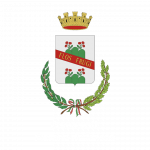A treasure hidden in the woods
The Dolo and Dragone Valleys guard, beneath the soil of their forests, a prized delicacy: the truffle.
The truffle is a fungus, but it grows underground in symbiosis with the roots of large trees. Its intense aroma and the difficulties of harvesting and cultivation make it rare and therefore much sought after by lovers of good food.
Four varieties of truffle can be collected in the municipalities of Frassinoro, Montefiorino, Palagano and Prignano sulla Secchia. These include: fine white truffle, also known as trifola, uncinato or black truffle of Fragno Scorzone, bianchetto or marzuolo truffle, and the smooth black truffle.
The fine white truffle (Tuber Magnatum Pico) is harvested from September 20 to January 20 in the west of Modena, as is the smooth black truffle. Slightly longer is the season for Tuber Uncinatum, which is sought between September 20 and January 31, while the summer variety (Tuber aestivum, also known as scorzone) can be harvested between May 1 and August 15.
In Montefiorino, at the height of the autumn harvesting season, between the last weekend of October and November 1, truffles can be purchased at the annual exhibition market of local products from the Dolo and Dragone Valleys. In addition to truffles, saffron, mountain Parmigiano Reggiano, ancient grain flours, fruit preserves and apple vinegar, goat and sheep cheeses and herb spirits are on display.
During the event and during the different harvest periods, it is possible to taste truffles in all the restaurants in the area.
The Chamber of Commerce of Modena, in collaboration with the GAL Antico Frignano, the Mountain Community and the municipalities of Frassinoro, Montefiorino, Palagano and Prignano sulla Secchia, to guarantee the consumer, has created the collective trademark ‘Traditions and flavours of Modena – Dolo and Dragone Valleys Truffle’. This requires compliance with a specification that delimits the production area, the species harvested and the tuber’s characteristics.









